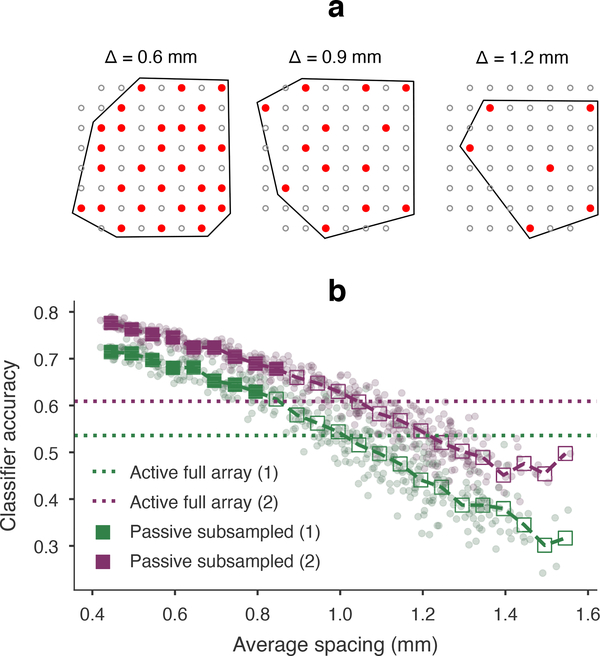Figure 6.
Field predictability and μECoG information content. We created nearly periodic spatial samples of passive recordings, and computed tone frequency classification accuracy for each sample. (a) Three examples of subsampled electrodes (solid red) are shown at different spatial periods. The average spacing was calculated as (A/n)1/2 for area A of the convex hull (traced in black) and n electrodes. (b) The reference accuracies based on fully sampled active arrays were 53.6% (rat 1) and 60.9% (rat 2). Chance accuracy was 7.7% for 13 frequencies. Purple and green points show classifier accuracy at each passive array subsample for rat 1 and rat 2, respectively. Accuracy results binned in 50 μm intervals (squares) were compared to reference accuracy (filled squares are significantly higher). Accuracy was not significantly higher than 400 μm spaced active electrodes starting at 845 μm for rat 1 and 895 μm for rat 2 (one-sided Z-test with binomial large sample Normal approximation, p = 0.003 threshold, false detection rate controlled at 0.05).

